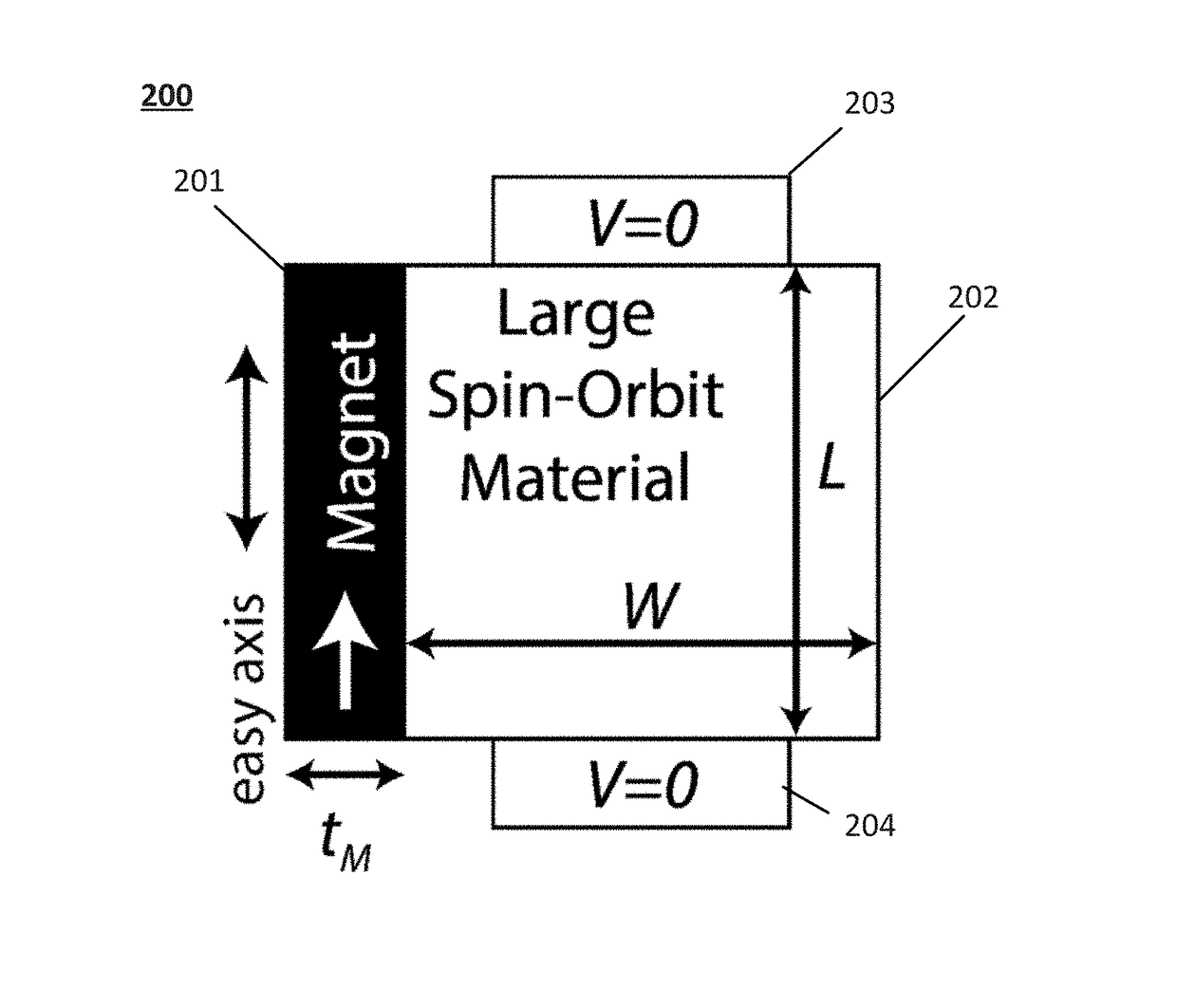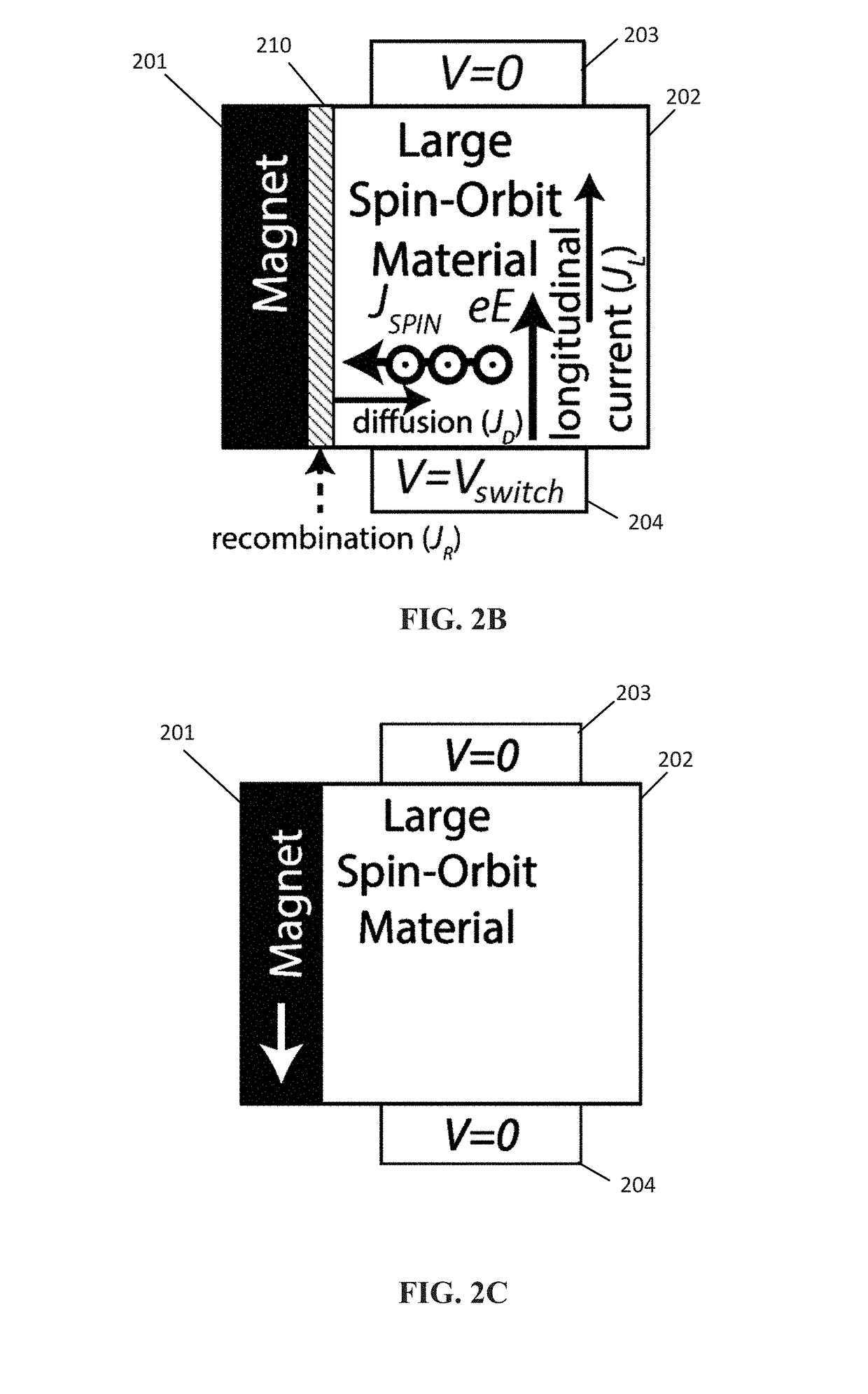Voltage-controlled magnetic-based devices having topological insulator/magnetic insulator heterostructure
a topological insulator and magnetic-based technology, applied in the field of voltage-controlled magnetic-based devices having topological insulators/magnetic insulators heterostructure, can solve the problems of information encoded in charge to be lost, consuming a significant quantity of power, etc., and achieve the effect of avoiding power dissipation due to carrier-based currents
- Summary
- Abstract
- Description
- Claims
- Application Information
AI Technical Summary
Benefits of technology
Problems solved by technology
Method used
Image
Examples
example
Evaluation of Switching Behavior
[0025]The switching behavior described with respect to FIGS. 2A-2C (where JD and JR are reduced to a negligible value) was estimated using calculations involving: (1) the rate at which spins accumulate at the interface with the magnet (at region 210 of FIG. 2B), which is provided by the spin Hall conductivity σSHC, and is σSHCVswitch / L, where L is the length of the topological isolator shown in FIG. 2A; and (2) the dependence on the density of interfacial spins of the exchange field Hex from those spins acting on the magnetic material.
[0026]The spin Hall conductivity available from large SOC materials such as topological insulators exceeds 1000 ( / e)Ω−1cm−1. To calculate the exchange field, YIG, which is a ferrimagnet composed of Fe3+ spins arranged in octahedral and tetrahedral sites, was used. The approximate exchange field is Hex˜104M, where M is the volume magnetization of spins. To determine the effect of the nonequilibrium spins, the spins are co...
PUM
 Login to View More
Login to View More Abstract
Description
Claims
Application Information
 Login to View More
Login to View More - R&D
- Intellectual Property
- Life Sciences
- Materials
- Tech Scout
- Unparalleled Data Quality
- Higher Quality Content
- 60% Fewer Hallucinations
Browse by: Latest US Patents, China's latest patents, Technical Efficacy Thesaurus, Application Domain, Technology Topic, Popular Technical Reports.
© 2025 PatSnap. All rights reserved.Legal|Privacy policy|Modern Slavery Act Transparency Statement|Sitemap|About US| Contact US: help@patsnap.com



